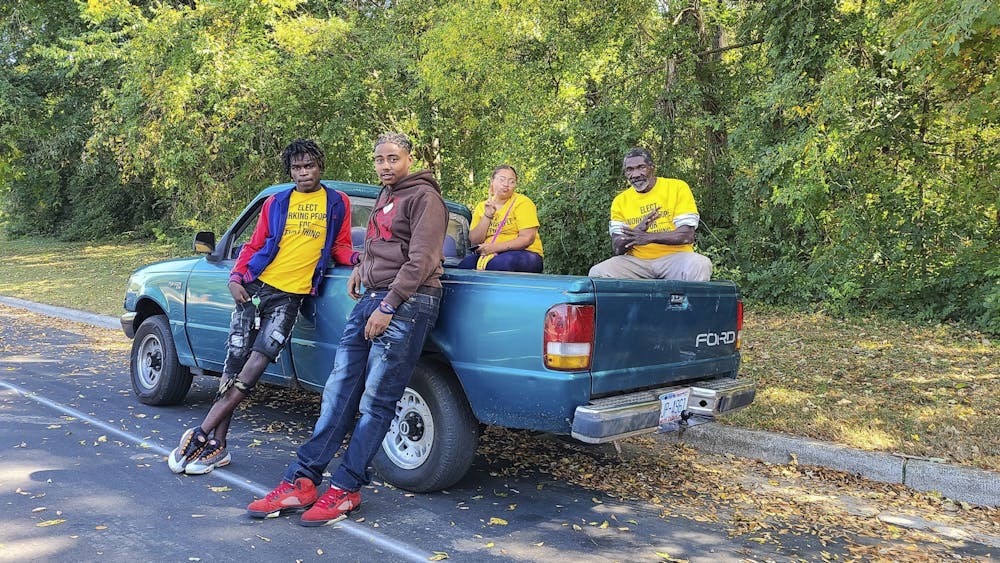Of the 2.2 million registered rural voters, 2 million are from rural areas with a white majority, and about 200,000 are from rural areas with a majority of people of color.
Jason Dunkin, a canvassing lead with Down Home North Carolina in Granville County, said many of the people he has met in his canvassing feel as if they are not affected by what is going on in their local government.
“It’s been a breath of fresh air to actually knock on these doors and get people actually educated on what’s going on,” he said. “Because a lot of these people do not know.”
As a person of color and someone who lives in a rural community, he said that he believes that individuals from marginalized groups are the main population and voices of these areas.
“We have to be the ones that the attention’s shifted on, that the attention’s focused on, because we’re the people that’s in those areas,” Dunkin said.
During election years, local members in each of the organization’s eight county chapters make nonpartisan endorsements for candidates in local and statewide elections.
A working group researches candidates to determine who would support working-class community members the best, bringing its findings to the chapter’s members, who then vote on endorsements.
Leah Bouchard, the director of research and data management at the NC Rural Center, said that rural communities have been made out to be a homogenous group, which has led to a lower voter engagement.
Although the majority of residents of rural North Carolina are white, 33 percent of the population in rural areas are people of color as of 2019. In addition, 17 percent of all rural voters were living in poverty, according to the NCRC.
To engage with rural voters, outreach needs to be diverse and intentional so that everyone has the opportunity to be heard, Bouchard said.
Charlie Crews, a voter from Clayton, N.C., has said that it can still be difficult for those living further away from the center of town to get to the polls to vote. However, he said he has noticed that as the town grew more suburban, it became easier to access voting polls.
"I think in the beginning it was harder to find polls, but as time has evolved, I think they've really stepped up with having more locations to vote," he said.
To get the day's news and headlines in your inbox each morning, sign up for our email newsletters.
Bouchard said reaching rural voters can be challenging, due to barriers such as a lack of transportation to polling locations or less awareness and access to online voting resources.
Rural voters may have less reliable broadband access than suburban and urban residents, which can prevent them from registering to vote online and accessing candidate information, Bouchard said.
This digital inequity creates civic deserts in rural communities, meaning that civic engagement is lower, she said.
“When people come into the community with pamphlets or mailers that candidates might send out, that might be the only way that rural people have access to information about candidates because so much of candidate information is on the internet,” Bouchard said. “But if you don’t have reliable broadband, you don’t have access to the information about candidates, about policies.”
Beyond elections, engaging more rural voters will help encourage community members to hold their representatives accountable in addressing necessary issues, Reaves said.
Both Reaves and Dunkin said they hope the work they are doing will encourage politicians to increase outreach to more local voters.
Bouchard said the issues that are important to rural voters are typically important to all voters.
“By keeping rural in mind, you are able to create more opportunity for the rest of the state as well,” she said.
@eliza_benbow
@DTHCityState | city@dailytarheel.com
Eliza BenbowEliza Benbow is the 2023-24 lifestyle editor at The Daily Tar Heel. She has previously served as summer university editor. Eliza is a junior pursuing a double major in journalism and media and creative writing, with a minor in Hispanic studies.



